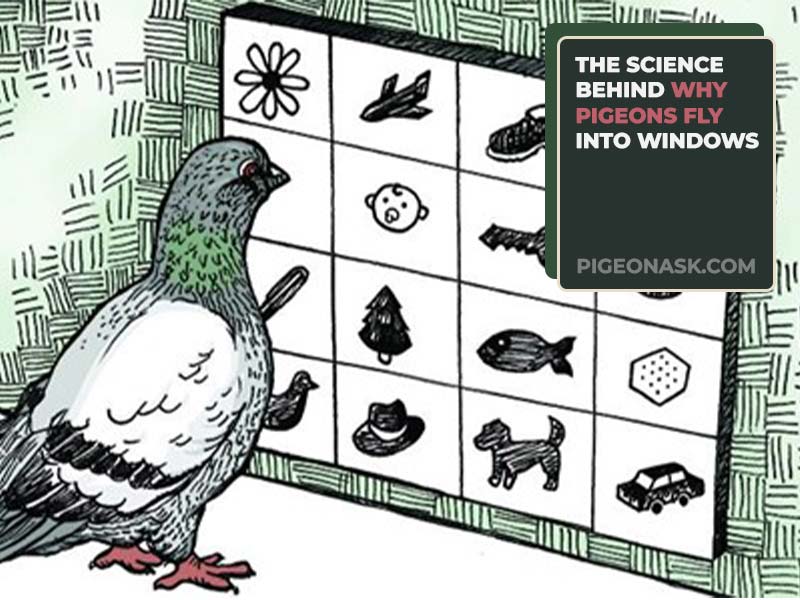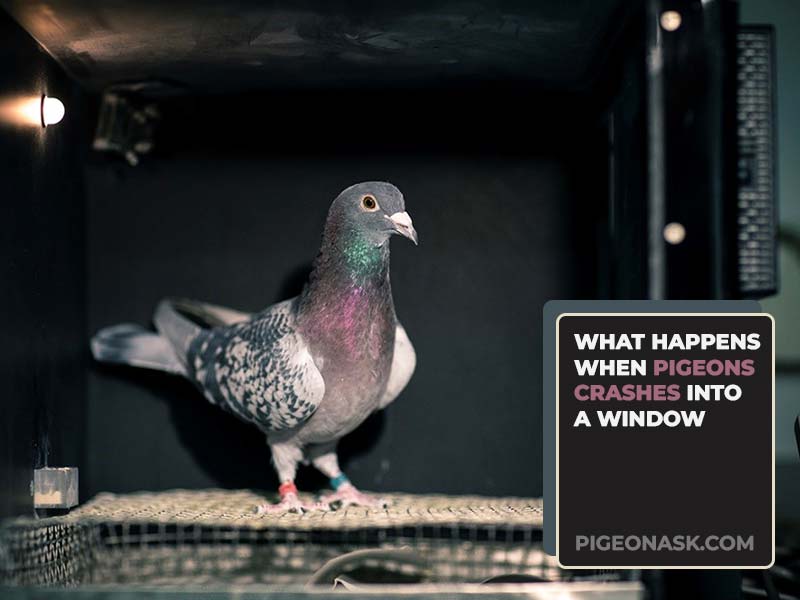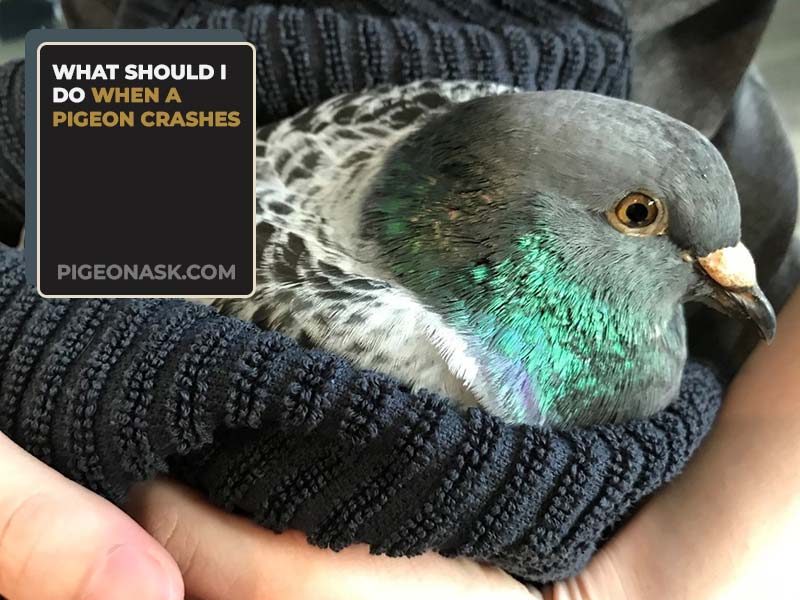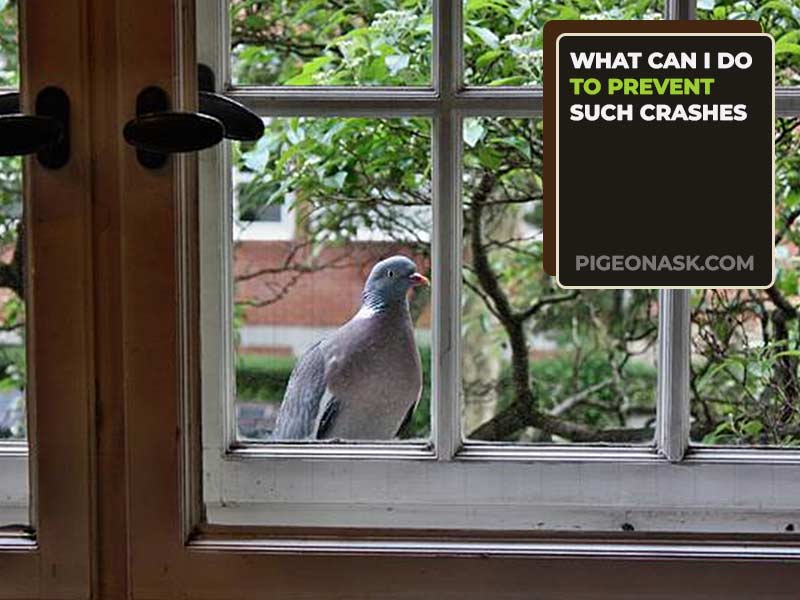Why Do Pigeons Fly into Windows?
While pigeons are considered smart and complex birds. They cannot understand the concept of glass windows and perceive the reflections to be clear pathways to vegetation.
So, why do pigeons fly into windows? The answer is very simple. In daylight, pigeons crash into windows because they see reflections of the trees and branches. Sometimes they see through the glass to potted plants or vegetation, assuming it is a clear pathway.
These crashes are often fatal. If you find that the pigeons that crashed appear to be in shock but alive, you can help them in certain ways.
There are also preventative measures you can take. Read this article to learn more.
Looking for more articles about pigeon habits:
The Science Behind Why Pigeons Fly into Windows
During the day, pigeons often mistake windows to be pat as pathways to more trees or branches due to the reflection now screens.
They do not see the glass as a barrier and fly through, it thinking it is a continuation of outdoor space.

Although pigeons are not nocturnal birds, there are several reports of them crashing during the night. They crash into lighted windows for shelter and warmth.
These crashes are quite frequent and fatal, there is a small chance the pigeon did not die on impact without sustaining severe injuries.
They are just in shock for some time and can go back to their surroundings after an hour or so.
We have covered an in-depth article on “Pigeon Habits“; if interested, you can check this article here.
What Happens When Pigeons Crashes into a Window?
They can suffer from injuries to their internal organs such as the brain., Even snap their necks. These collisions are fatal for the most part.
If they do manage to fly away in shock, internal damage or bruising is likely to kill them.

Statistically in the United States alone, research shows over 54-76% that f these collisions are fatal.
When you find a pigeon after a window collision, check to see if it is stunned or dead. If it is found breathing, chances are the pigeon is suffering from a concussion or internal injuries.
If dead, it must have sustained severe injuries such as fractures to the bill, skull, or wings.
What Should I Do When a Pigeon Crashes?
When examining an injured pigeon, first check for vitals such as breathing and any visible injuries.
If the pigeon is in a vulnerable position, move it gently to a remote, nicely light space.

This will ensure safety from predators such as owls, hawks, cats, or even raccoons.
Give the pigeon 2-3 hours to recover from shock, once ready you can release it immediately back into the open. If you see major injuries, call a medical professional.
Here is a list of things you should not do when dealing with injured pigeons:
01. Do Not Try to Feed Water or Food to the Injured Pigeon:
Pigeons need a stable and calm environment to recover for a brief amount of time in captivity. The pigeon is capable to forage on its own.
02. Do Not Give the Pigeon Any Medication:
Most human medication to toxic to pigeons if you see any broken appendages or excessive bleeding.
Gently wrap in gauze snuggly and contact your animal doctor immediately.
03. Do Not Release Pigeon Indoors:
You may want to check on your pigeon every now and then but doing so will startle the pigeon that will try to escape prematurely.
The pigeon will panic and stress itself out in unfamiliar surroundings. It can injure itself further by colliding with walls, furniture, or windows.
What Can I Do to Prevent Such Crashes?
You can opt for a bunch of preventative measures to reduce the chances of pigeons colliding with your windows. There are several ways –

Tempera Paint or Soap:
Paint the outside of the window with soap or tempera paint, which is inexpensive and long-lasting. You can use either a grid pattern, or you get creative and paint patterns or artwork on your window.
Stickers:
Stickers, sun catchers, mylar strips, masking tape, or other objects even sticky notes on the outside surface of the window. These are only effective when spaced very closely
Acopian Bird Savers:
Also known as ‘Zen Curtains,’ these closely spaced ropes hang down over windows. They do the work of tape or decals but are easier to install and can be aesthetically pleasing.
Screens:
Installing mosquito screens over your windows are very effective, as long as they are on the outside of the window and cover the entire surface.
Netting:
Cover the glass on the outside with netting at least 3 inches from the glass, taut enough to bounce birds off before they hit.
Small-mesh netting is ideal. You can mount the netting on a frame, such as a storm-window frame, for easy installation and removal.
Conclusion
Pigeon collisions are tragic and inevitable, but there are plenty of ways you can adopt to prevent these accidents from happening.
The idea is to cover your windows to prevent reflection. If you see pigeons dead upon encounter, then dispose of the carcass by burying it or wrapping it in a bag.
It is better to be safe than sorry if you still see yourself asking why do pigeons fly into windows?
You only come to realize that pigeons are smart but not absolute geniuses.
If you enjoyed this article, make sure to share it on your social media. You can connect with us on Facebook, Twitter, and Pinterest to find more interesting articles on pigeons and similar topics, so remember to follow us.
Article References:
- https://www.thespruce.com/when-birds-hit-windows-386511
- https://audubonportland.org/our-work/rehabilitate-wildlife/being-a-good-wildlife-neighbor/birds-and-windows/
- https://www.bhg.com/gardening/design/nature-lovers/prevent-birds-from-flying-into-windows/
- https://www.allaboutbirds.org/news/why-birds-hit-windows-and-how-you-can-help-prevent-it/
- https://extension.psu.edu/bird-continually-hitting-window
Image Source:
- Photo from canva.com/photos
- Photo from livescience.com (Kathryn Gamble)
- Photo from now.uiowa.edu (John Petsel)
